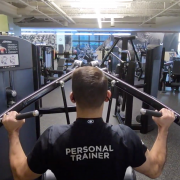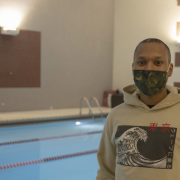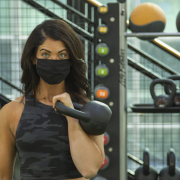Use These Weight Machines At The Gym For A Total Body Workout
When is the last time you used a weight machine at the gym? If strength training is part of your routine, these machines can come in handy, but a lot of gym-goers have no idea how to use these machines. These machines are a great way to introduce your body to new movements, and they can be helpful during busy times at the gym. If the squat rack is occupied or a fellow member has snagged your preferred size of free weights, there is likely a machine available that you can use to work the same muscles groups.
We get it, the machines section of the gym can be intimidating. You’re not sure what this knob controls, what that cable does or where to sit on the machine. To help you get started, we highlight three of our favorite weight machines at the gym in this post and show you exactly how to use them for a great total body workout. Let’s get started!
Weight Machine Safety And Etiquette
Before you start using the weight machines at the gym, there are a few important safety and etiquette tips to go over.
- Adjust the height of the seat, handlebars, etc and test that your settings are appropriate for your body before beginning the movement. Never touch the adjustment levels while you are performing an exercise!
- Check the weight stack on the machine and adjust to your preferred weight where you can perform 8 good reps. It’s always best to start with a lighter weight and adjust to a heavier weight if needed.
- Don’t let the weight stack slam at the end of your rep.
- If resting between sets, please allow others who may be waiting to work in between your sets.
- Wipe down the seats, handles, etc on the machine before moving on to your next machine.
Related: 8 Benefits of Using Weights In Your Fitness Routine
How To Use The Lat Pulldown Machine
The Lat Pulldown machine mainly focuses on the muscles in your back and works your biceps as well. After adjusting your seat height and selecting your weight, place your hands on the handlebars about shoulder-width apart. Grab the handles and then sit down. Your thighs should fit snugly under the pads.
Keep a nice tall posture with your eyes looking straight ahead. Exhale as your pull down on the handlebars, inhale as you return as you return the handles overhead. As you perform this exercise, your shoulders should be pulling down into your armpits, activating the lats. After your set of reps is complete, slowly raise the handlebars back overhead, stand and lower the weight gently.
How To Use The Leg Press Machine
The leg press machine works all of your leg muscles. The first thing to check when you’re using the leg press machine is the seat set-up. There is a lever on the seat that allows you to move the seat closer to and farther away from the platform where you place your feet. For the leg press, the starting position for the seat should be close to the platform. Next, select your weight and then take a seat.
Place your feet flat onto the platform at about hip-width distance. Make sure your lower back is pressed fully against the back of the seat and grab onto the handles on the side of the seat. Keeping your spine tall, press away from the platform so that your legs are extended. Be careful to keep a slight bend in the knee – there is no need to lock out your knees here. Inhale as you pull yourself back down to the platform, knees pointing slightly out. Before the weight plates touch, push yourself back away from the platform for the second rep.
How To Use The Chest Press Machine
The chest press machine works your chest, shoulders and triceps. To set up for the chest press, first check your seat height, then sit down and check that your wrists are lined up with your low to mid pec when you place your hands on the handlebars. This helps ensure that your shoulders are in a relaxed position. Lastly, select your weight on the machine.
After you’ve selected your weight, take a seat. There is usually another lever near the handlebars that controls how close or how far away your starting position is from your body. You don’t want your starting position to be back so far that your chest muscles are being stretched when you place your hands on the handlebars, but your wrists should be relatively close to your body to begin.
While gripping the handlebars, pull your elbows done to align them with your wrists. Make sure your spine is resting on the seat behind you, drive your feet into the ground to activate your legs and hips and exhale as you push the weight away from you. Inhale as you pull the weight back toward you, using your lats for control. Before the weight plates touch, push the handlebars back away from your body for the second rep.
20 Minute Weight Machine Workout
Put these three movements together for a great total body workout using the weight machines at the gym. Here is the workout:
10 Reps at the Lat Pulldown Machine
Rest – 30 seconds to 1 minute
10 Reps at the Leg Press Machine
Rest – 30 seconds to 1 minute
10 Reps at the Chest Press Machine
Rest – 30 seconds to 1 minute
Repeat this circuit 3 times. If the machines become occupied during your workout, you can mix in mountain climbers, dead bugs or planks while you are waiting. This workout should take you between 15-20 minutes to complete. You can also pair this workout with cardio for a great 30-40 minute workout!
Related: Looking for more workouts? Try this 20 Minute Kettlebell Workout

Post written by FFC Contributor Natalie Casper. Video and workout courtesy of FFC Fitness Director Mario Dato.





